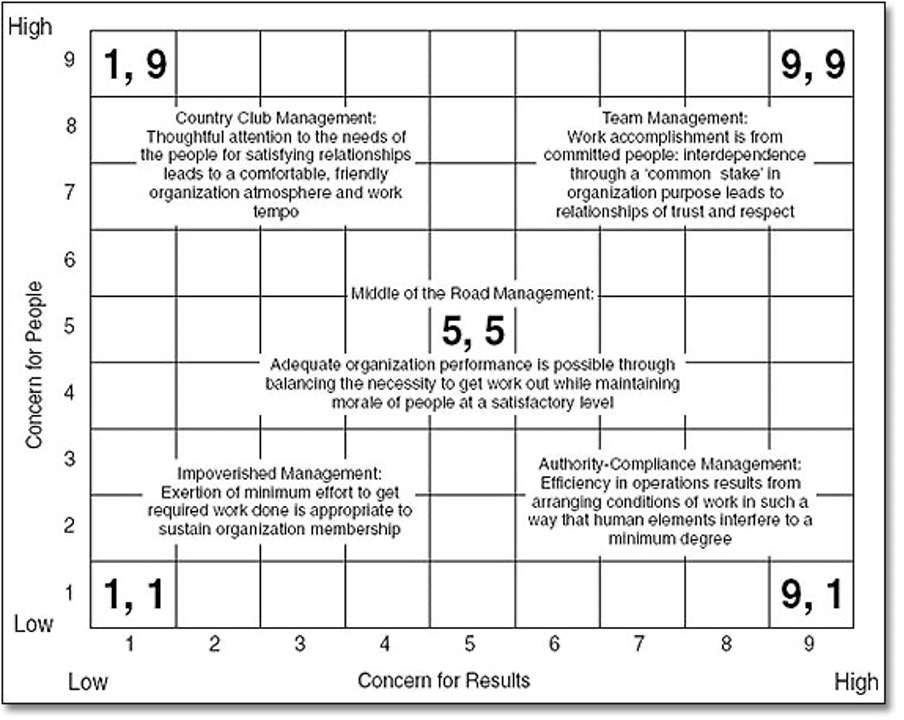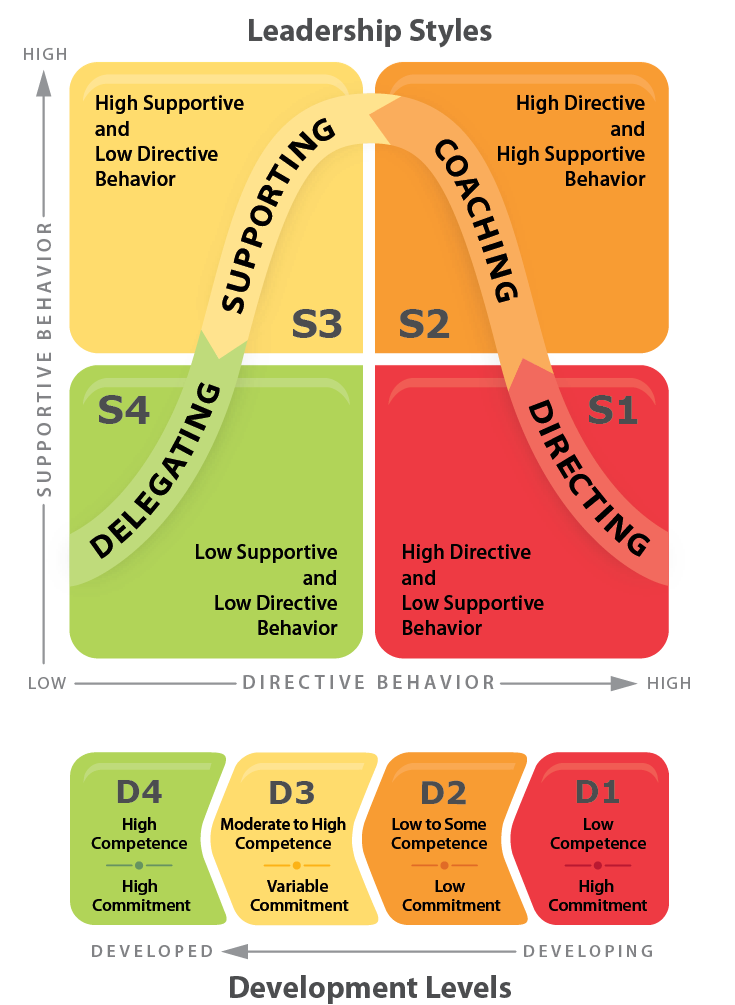Anyone that works in a professional environment will have heard the word leadership. The secret sauce that you seemingly develop as you progress in your career and begin to lead projects, teams and larger divisions.
Leadership is something that was emphasised early on in my career in the Civil Service, where I was fortunate enough to have opportunities to develop my leadership skills through a combination of training, challenging roles and exposure to management.
However, it took a few years before I started to consciously view myself as a leader and becoming more senior helped with this. On reflection, there was nothing to wait for. The sooner you understand leadership and begin to visualise the leader you want to be, the quicker you will become that person.
In this blog I want to go back to basics and provide an overview of the different ways of thinking about leadership, drawing mainly on Leadership: Theory and Practise (Northouse, 8th Edition).
What is leadership?
There isn’t a single definition of leadership, but we can lay out some observations.
Leadership:
- Is a process which involves influence
- Occurs in groups
- Involves common goals
This leads to a simple definition:
Leadership is a process whereby an individual influences a group of individuals to achieve a common goal.
I like the definition of leadership that views it as a process because it implies that a leader affects and is affected by those they are leading, which is very much in line with my experience.
There hasn’t been a single project or role I’ve done where I haven’t looked back and reflected on the huge amount I had learned from everyone around me.
This is a point worth emphasising – leaders are no better than anyone else in the group. They are in a relationship with the group and work collectively to achieve a common goal.
Influence is also an essential part of leadership, which emphasises that leaders must work with the group to achieve this goal.
The last thing to draw from the process definition of leadership is that all members of the group are involved in the leadership process and will be leaders in their own right. However, ‘the leader’ is the one who initiates the relationship, creates the communication linkages, and has the responsibility of maintaining the relationship.
Let’s cover four of the common approaches to leadership to give us different ways to think about ourselves as leaders:
- Traits – leader centred
- Skills – leader centred
- Behaviours – leader and group centred
- Situational – leader and group centred
I have a link at the end to a set of questionnaires we can use to assess ourselves on each approach and identify areas to develop.
Traits
Research on traits of a leader highlights the following:
- Intelligence – strong verbal ability; ability to understand and interpret information; reasoning skills
- Self-confidence – being certain about your competencies and skills, including the certainty that you are able to make a difference
- Determination – strong desire to see things through to completion, including persistence, drive and initiative
- Integrity – honesty and trustworthiness, so that you are believable and people put their trusty in you
- Sociability – being friendly, outgoing and diplomatic so that you create good relationships with the people around you
Another aspect related to the characteristic of a leader is the ability to understand and capitalise on their strengths and the strengths of other people.
It is worth reflecting on how well we tick the boxes for these leadership traits, but bear in mind that one of the main weaknesses of focusing on traits is that they don’t take into consideration the different situations and circumstances you can find yourself in.
Being strong in some of these leadership traits may make someone a good leader in one situation, but a poor leader in another.
Overall, the trait approach to leadership is very useful. When we recruit new members of staff or think about staff performance and development, the trait approach simplifies things and allows us to focus on traits we know are associated with strong leadership. This is simple, intuitive and can make things more systematic.
Skills
This approach emphasises the capabilities (knowledge and skills) needed to be an effective leader. We are moving into the world of competencies now!
This is an interesting approach because it focuses on aspects of an individual that can be developed as opposed to innate traits, which is my philosophy on The Education Journey.
A popular skills model suggests there are three core competencies important for a leader:
- Problem-solving skills
- Social judgment skills
- Knowledge
These are the core determinants of a leaders performance and ability to solve problems.
These competencies are affected by the leaders:
- Traits
- Experience
- Environment
The skills approach is appealing as it implies that through experience and training, you can become a better problem solver and more effective leader.
It also provides development routes for becoming an effective leader, especially in an organisational context, as it emphasises the leader’s skills themselves as the most important aspect of addressing organisatonal problems.
Behaviours
This approach shifts towards the actions of a leader in various contexts, as opposed to their personality, traits and capabilities. In other words, what a leader does rather than who they are.
A leader’s behaviours can be grouped into two different categories:
- Tasks – these are the behaviours that facilitate working towards the common goal e.g. giving structure to projects, setting out roles and responsibilities, scheduling work etc.
- Relationships – these are the behaviours that build strong relationships between the group e.g. team building activities, motivation, wellbeing, dealing with difficult situations etc.
You can think of these as two different levels, where a leader’s behaviours are working towards both providing structure and nurturing a group. The balance of behaviours in play at any one time will depend on the situation.
Leaders will have to demonstrate behaviours in both categories, however there isn’t a consensus on the right balance for effective leadership. Sometimes leaders will have to lean heavily on task-oriented behaviours in order to be successful. Other times relationship behaviours will need to be drawn on more heavily.
The main strength of this approach is the framework to allow us to start thinking about our behaviours broadly in relation to the tasks and relationship dimensions.
The leadership grid model shows different combinations of task and relationship behaviours, so it’s worth using to visualise which combination you display most often and whether you should be flexing different combinations for different circumstances.

Source: myleadershiplog
Situational
This approach looks at leadership in different situations and how leaders need to adapt their leadership styles towards the group to be effective.
A key ingredient to this approach is an assessment of both the capabilities and commitment of the group as this will help to determine which style will be most effective.
The team as a whole and its individual members may be extremely capable, with the right skills needed to achieve the goals, but lack enthusiasm and commitment. Conversely, they may be extremely motivated, but they lack the right skills needed to deliver the goals.
The first task is to do a development assessment to determine the capabilities and commitment of the group and its members:
- Is competence low, medium or high?
- Is commitment low, medium or high?
We now turn to the leadership styles, where there is emphasis on both directive and supportive behaviours. The balance of which behaviours to adopt will differ depending on the situation and the development assessment above:

Source: Workplace Psychology
- Directing: high directive and low supportive behaviours (S1) – this style focuses communication on goal achievement and spends less time on supportive behaviours.
- Coaching: high directive and high supportive behaviours (S2) – communication focuses on goals as well as the non-goal related needs of the group.
- Supporting: Low directive and high supportive behaviours (S3) – efforts are focused around supportive behaviours that support the group to deliver the end goal. A lot of the decision making would done by the group, but the leader would be involved in signing off key decisions and working through difficult problems.
- Delegating: low directive and low supportive behaviours (S4) – the leader delegates responsibility of delivering the end goal to the group, with little input or direction. Although this may sound like bad leadership, there are definitely times when this style is effective and should be adopted.
Combining the two to get a recommended situation-based leadership style is very intuitive.
At one end of the spectrum, if capability and commitment are both low, then a coaching style should be adopted as you will need to be more directive and supportive to provide structure, set direction, build the team’s capabilities, generate motivation etc.
Conversely, on the other end of the spectrum, if the capability and commitment are high then a delegating style will be more effective. The team will be able to deliver without much support and direction and too much involvement will be a hinderance and slow things down.
This also holds for individuals within the group and the leadership style should be adapted to individuals as well as the group as a whole / overall situation.
Moving forward
As you can see, leadership isn’t a secret sauce. The fundamental approaches outlined above give us plenty to reflect on and have clear implications for our own personal development and journey to becoming great leaders.
There are other well-known leadership models, including authentic, transformational and servant leadership. I’ll be exploring these in more detail in future blogs
These questionnaires will help you assess yourself on each approach we’ve discussed – Ch 2, 3, 4, 5 are the relevant questionnaires.
Further Reading:
Leadership: Theory and Practise (Northouse, 8th Edition).
